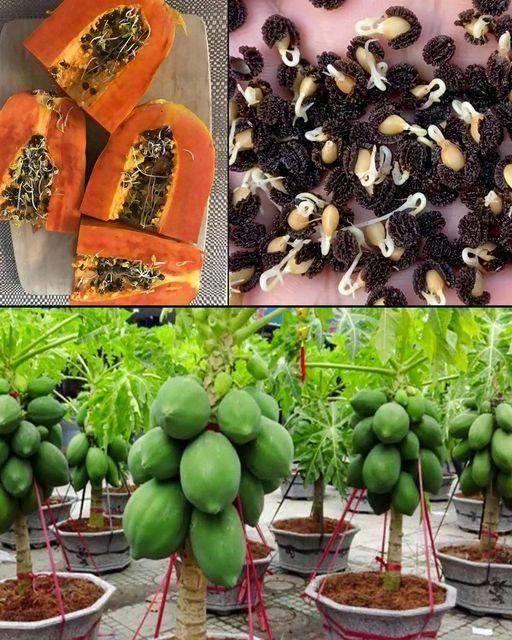Opt for dwarf or compact papaya varieties tailored for pot cultivation. Dwarf mountain papaya or solo papaya are excellent choices that adapt well to container life, promising a fruitful harvest without the expansive growth.
3. Soil Preparation
Papayas demand well-drained soil to prevent root rot. A blend of garden soil, compost, and perlite or vermiculite creates an ideal environment. This mix should retain moisture efficiently while ensuring proper drainage.
4. Planting
Plant papaya seeds or a young seedling in the prepared pot. Enrich the planting hole with compost to give your papaya a nutrient-packed start. Ensure the plant is centered and surrounded by your soil mixture, then press down around the base to secure it.
5. Watering and Fertilization
Maintain consistent soil moisture, especially in warm months, without overwatering. Papaya benefits from regular feeding with a balanced fertilizer every 4 to 6 weeks, emphasizing a potassium-rich formula to boost fruiting.
6. Size Management
Due to its rapid growth, regular pruning of your papaya plant helps manage its size and shape. Pruning also encourages the development of the main fruit-bearing branches.
7. Pest Protection
Continue Reading in next page

